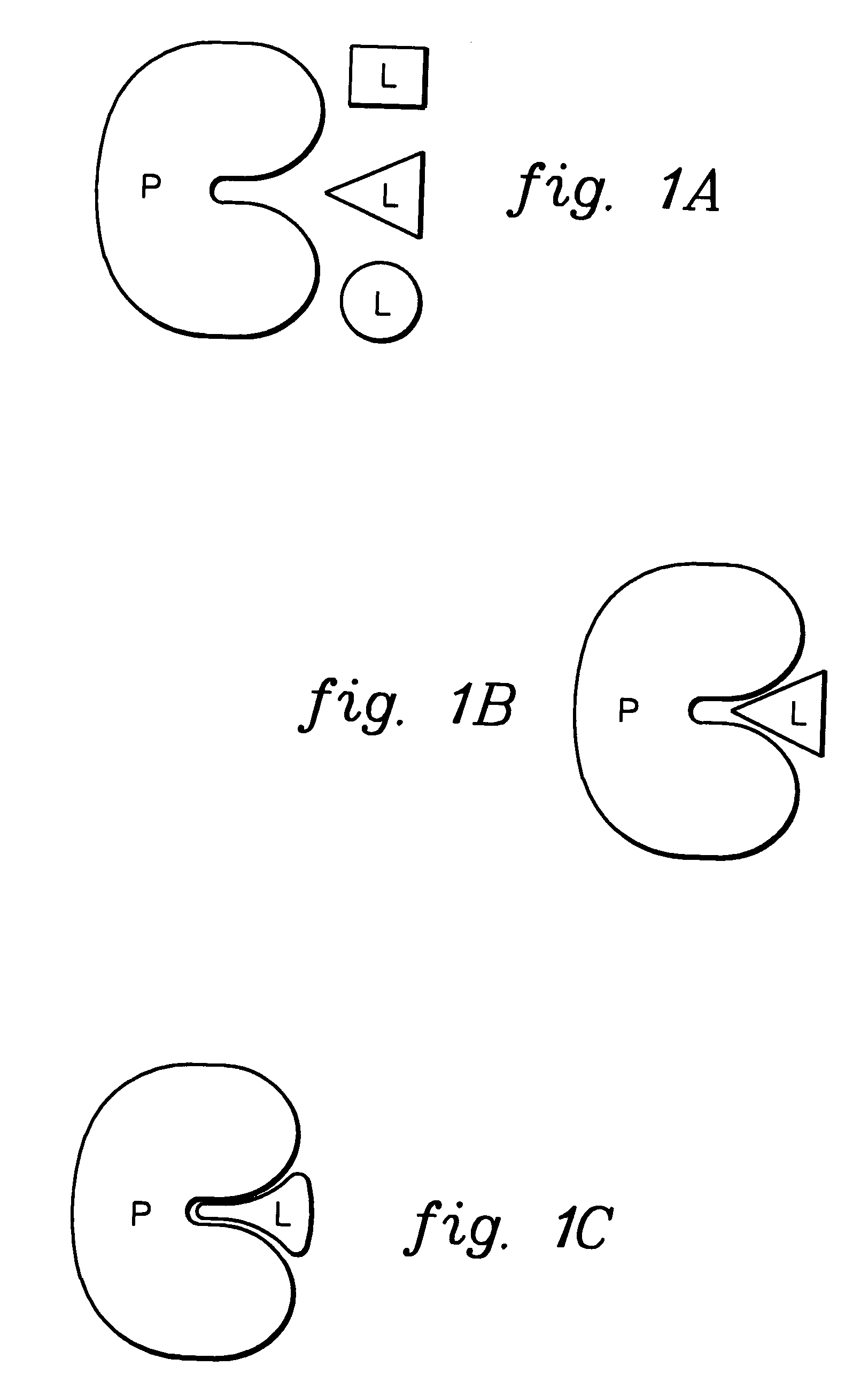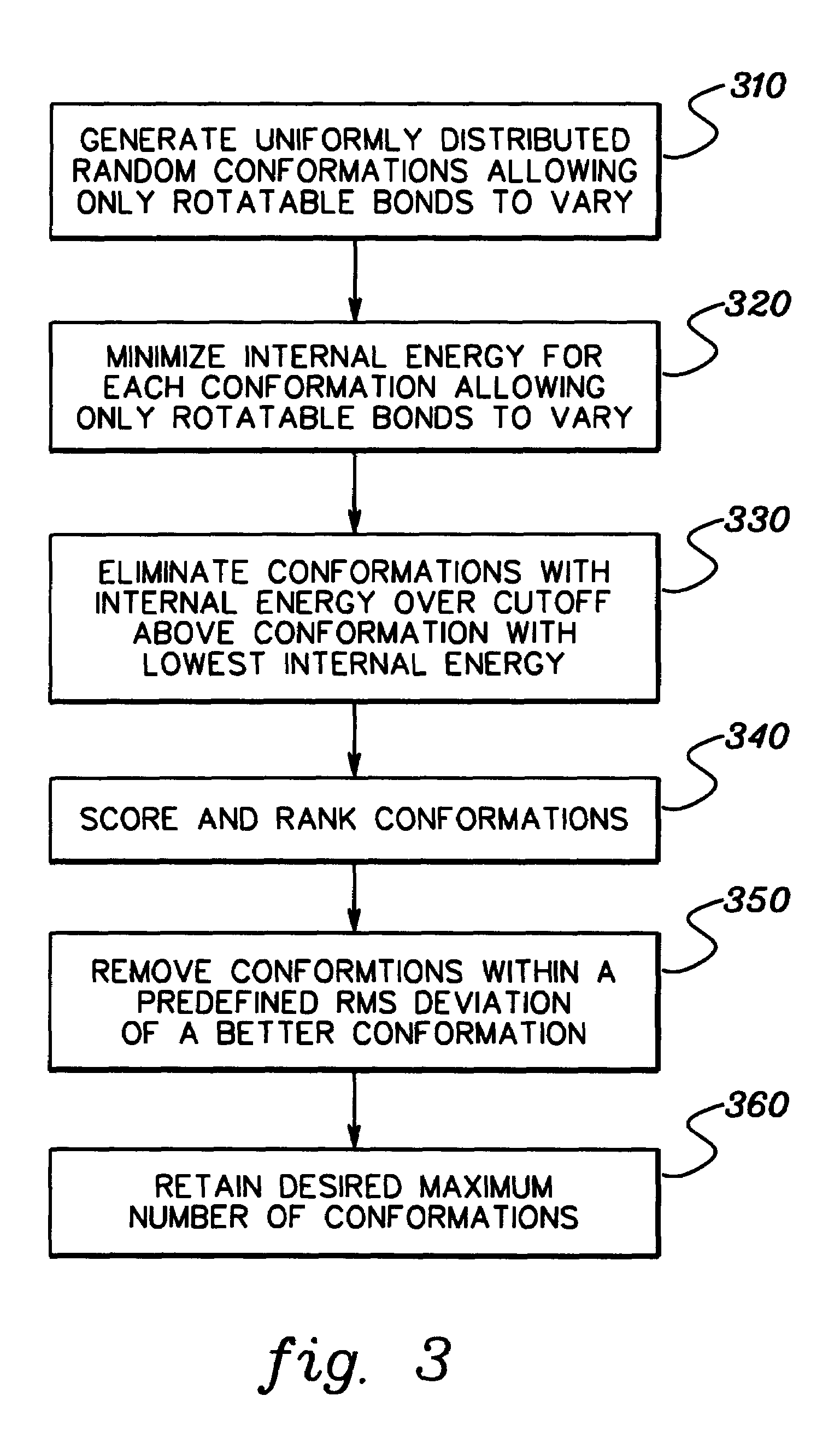[0006]To briefly summarize, presented herein in one aspect is a method of docking a ligand to a protein. The method includes: performing a pre-docking conformational search to generate multiple solution conformations of the ligand; generating a binding site image of the protein, the binding site image comprising multiple hot spots; matching hot spots of the binding site image to atoms in at least one solution conformation of the multiple solution conformations of the ligand to obtain at least one ligand position relative to the protein; and optimizing the at least one ligand position while allowing translation, orientation and rotatable bonds of the ligand to vary, and while holding the protein itself fixed.
[0007]In another aspect, a
system for docking a ligand to a protein is provided. The
system includes means for performing a pre-docking conformational search to generate multiple solution conformations of the ligand. In addition, the
system includes means for generating a binding site image of the protein, with the binding site image comprising multiple hot spots; and means for matching hot spots of the binding site image to atoms in at least one solution conformation of the multiple solution conformations of the ligand to obtain at least one ligand position relative to the protein. An optimization mechanism is also provided for optimizing the at least one ligand position while allowing translation, orientation and rotatable bonds of the ligand to vary, and while holding the protein fixed.
[0009]The docking method presented herein has several advantages. First, it is built from several independent pieces. This allows one to better take
advantage of scientific breakthroughs. For example, when a better conformational
search procedure (in the present context this means more biologically relevant conformers) becomes available, it can be used to replace the current conformational
search procedure by generating new 3-D databases. Second, this approach to ligand flexibility is better suited for the class of compounds synthesized through combinatorial methods. Compounds from combinatorial libraries frequently do not have a clear anchor fragment. Because finding and docking an anchor fragment from the ligand are key steps in the incremental construction algorithms, these algorithms may encounter difficulties with compounds commonly found in combinatorial libraries. (Incremental construction algorithms work roughly as follows: the ligand is divided into rigid fragments; the largest of these fragments is docked into the binding site of the protein; and the ligand is then rebuilt in the binding site by attaching the appropriate fragments and systematically searching around the rotatable bonds. The procedure is described further in: M. Rarey, B. Kramer, T. Lengauer, & G. Klebe, “A fast flexible docking method using an incremental construction
algorithm”, J.
Molecular Biology, 261 (1996), pp. 470–489; and S. Makino & I. Kuntz, “Automated flexible ligand docking method and its application to
database search”, J.
Computational Chemistry, 18 (1997), pp. 1812–1825.) Docking entire conformations overcomes this difficulty. In addition, including an efficient flexible optimization step removes a significant burden from the conformational
search procedure. Further improvements in
energy minimization algorithms can also be taken
advantage of, as they become available.
[0010]The approach herein to ligand flexibility could be viewed as a liability because of a reliance on an initial conformational search. As indicated previously, in order to achieve
maximum efficiency the conformational search should be performed once for an entire
library or collection and the resulting conformations stored for future use. For large collections, this would be a considerable investment in both computer time and
disk space. Because a
database will typically be used many times, the initial computer time for the conformational search can easily be justified. Moreover, with the availability of parallel computers and faster CPUs, the conformational search can be completed or occasionally redone in a reasonable amount of time. Since disk sizes are now approaching the tera-
byte level, storing the conformations for millions of compounds presents no problem.
 Login to View More
Login to View More 


